News Archive

Gathering In the Mountains, Reflecting on the Future of Water
December 15, 2023Amongst the beautiful landscape of the Rocky Mountains, nine Young Indigenous Artists gathered in person for the first time to share their insights, skills, and passions. From November 20 to 24, […]
more>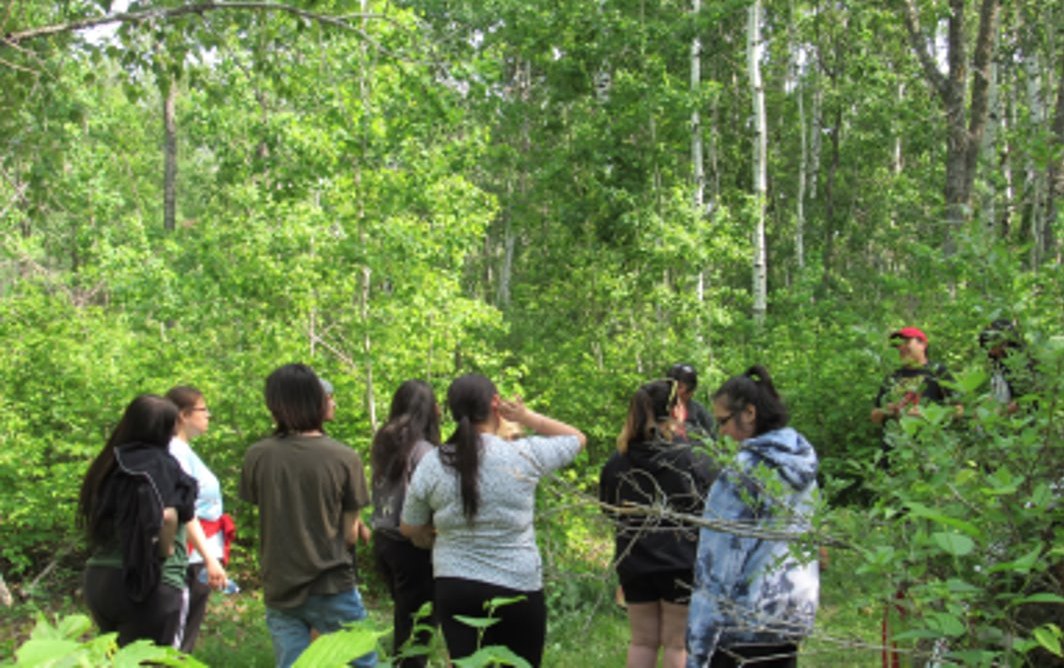
The Changing Climate of Gaa-wiikwedaawangaag
December 15, 2023When CIER started working with Sandy Bay Ojibway First Nation (SBOFN) on a climate change adaptation planning project in 2021, it quickly became apparent that tree planting was an adaptation action with […]
more>
You’re Invited! – National Indigenous Engagement on the North American Waterfowl Management Plan
December 14, 2023Environment and Climate Change Canada – Canadian Wildlife Service (ECCC-CWS) and the Centre for Indigenous Environmental Resources (CIER) would like to invite you and members of your community or organization […]
more>
CLOSED – Independent Contractor: Species at Risk Community Liaison
October 18, 2023Effective Date Immediately Summary The Centre for Indigenous Environmental Resources (CIER) is seeking an independent contractor to fill the position of Community Liaison to support CIER and Environment and Climate […]
more>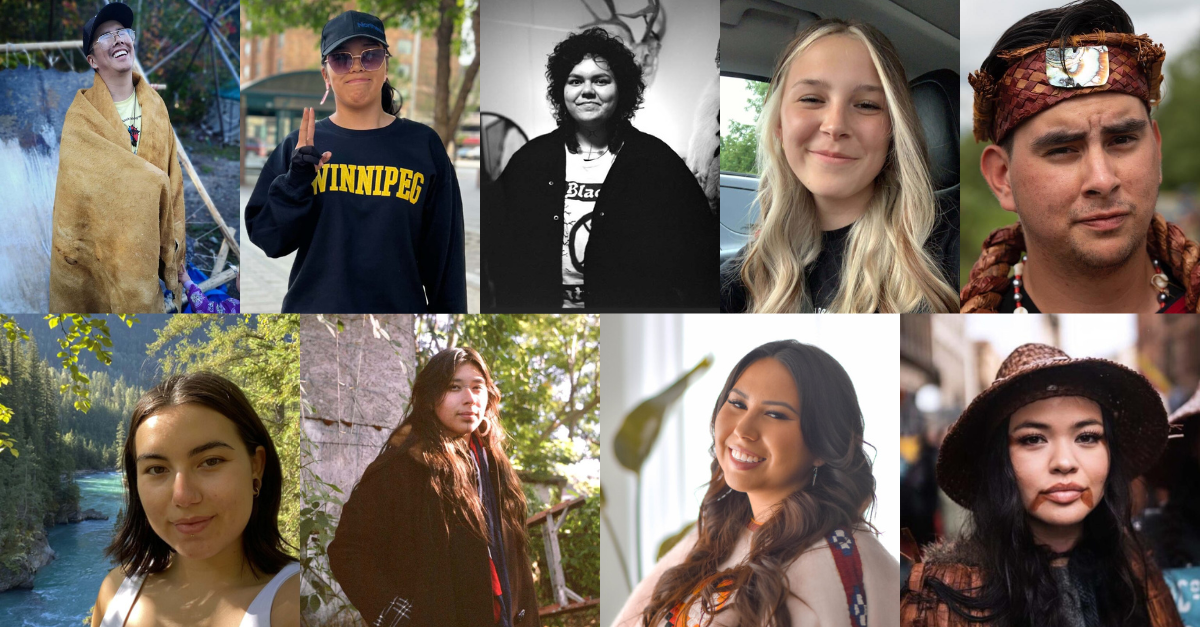
The Indigenous Youth, Art and Water Initiative – Fall 2023 Update
September 19, 2023The Indigenous Youth, Art and Water Initiative (IYAWI)—the first phase of the Indigenous Water Allyship—has completed its outreach for applications from organizations, and 31 applications were received and carefully reviewed. […]
more>
Practicing Tradition During The Fall Hunt
September 19, 2023As the weather cools and the leaves change colour, communities and families begin to gather and prepare for the Fall Hunt. Since time immemorial, Indigenous Peoples have practiced subsistence hunting and maintained […]
more>
CIER Ecoversity Expansion Continues, Requested Courses Added
September 19, 2023CIER Ecoversity, an online learning platform, was created for broader access to comprehensive learning from a wide variety of courses to help Indigenous communities develop and enhance their knowledge base […]
more>
Food Sovereignty and Pollinator Appreciation
September 19, 2023Over the past year, CIER has worked alongside Northlands Dene, Barren Lands and St. Theresa Point First Nations to strengthen food sovereignty through gardening and pollinator species support. The three […]
more>
CLOSED: Climate Change Associate
September 8, 2023Are you the One? We need your skills! The Centre for Indigenous Environmental Resources (CIER) invites applicants for the position of Climate Change Associate. The successful candidate will be keen to join […]
more>
CLOSED: Biodiversity Project Manager
September 7, 2023Engagement, planning, logistics, team motivator, strong communication and writing – we need your skills! The Centre for Indigenous Environmental Resources (CIER) invites applicants for the position of Biodiversity Project Manager. […]
more>
Strengthening Roots Through Climate Awareness
June 16, 2023On a sweltering day this June, the ninth-grade psychology class at Isaac Beaulieu Memorial School went on a field trip to two local traditional sites: Medicine Rock and the Thunderbird Nest. […]
more>
Graduate Spotlight: Graphic Recording Program – Katie Laronde
June 15, 2023Katie has a natural talent for translating dialogue into graphics. “Our Indigenous culture is more aligned with oral communication and storytelling, so I think graphic recording is complementary,” says Katie Laronde […]
more>
CIER and One Drop Collaborate on Indigenous Youth, Art and Water Initiative
June 15, 2023The One Drop Foundation is an international philanthropic organization created by the founder of Cirque du Soleil and Lune Rouge to create a vision of a better world where all […]
more>
CIER Team Retreat Highlights: May 16-19
June 15, 2023This spring’s team retreat in Winnipeg, Treaty One territory, on the lands of Anishinaabe, Ininiwak, Anishininew, Dakota, and Dene, and the National Homeland of the Red River Métis, was primarily held at the Wyndham […]
more>
CLOSED: Independent Contractor – SPECIES AT RISK COMMUNITY LIAISON
June 7, 2023Effective Date Immediately Summary The Centre for Indigenous Environmental Resources (CIER) is seeking a community liaison to support CIER and Environment and Climate Change Canada-Canadian Wildlife Services (ECCC-CWS) with the […]
more>
CLOSED: Accounting Associate
April 3, 2023The Centre for Indigenous Environmental Resources (CIER) supports Indigenous people and communities to be leaders of positive environmental change, using the best of Western and Indigenous knowledge to create a […]
more>
CLOSED: Executive Assistant
April 3, 2023The Centre for Indigenous Environmental Resources (CIER) supports Indigenous people and communities to be leaders of positive environmental change, using the best of Western and Indigenous knowledge to create a […]
more>
Collaborative Leadership Initiative Meeting 10: Our Shared Future
March 17, 2023On March 17, CIER and its partners at the Winnipeg Metropolitan Region and Southern Chiefs’ Organization brought together Chiefs, Mayors, and Reeves from First Nations and municipalities across southern Manitoba. It […]
more>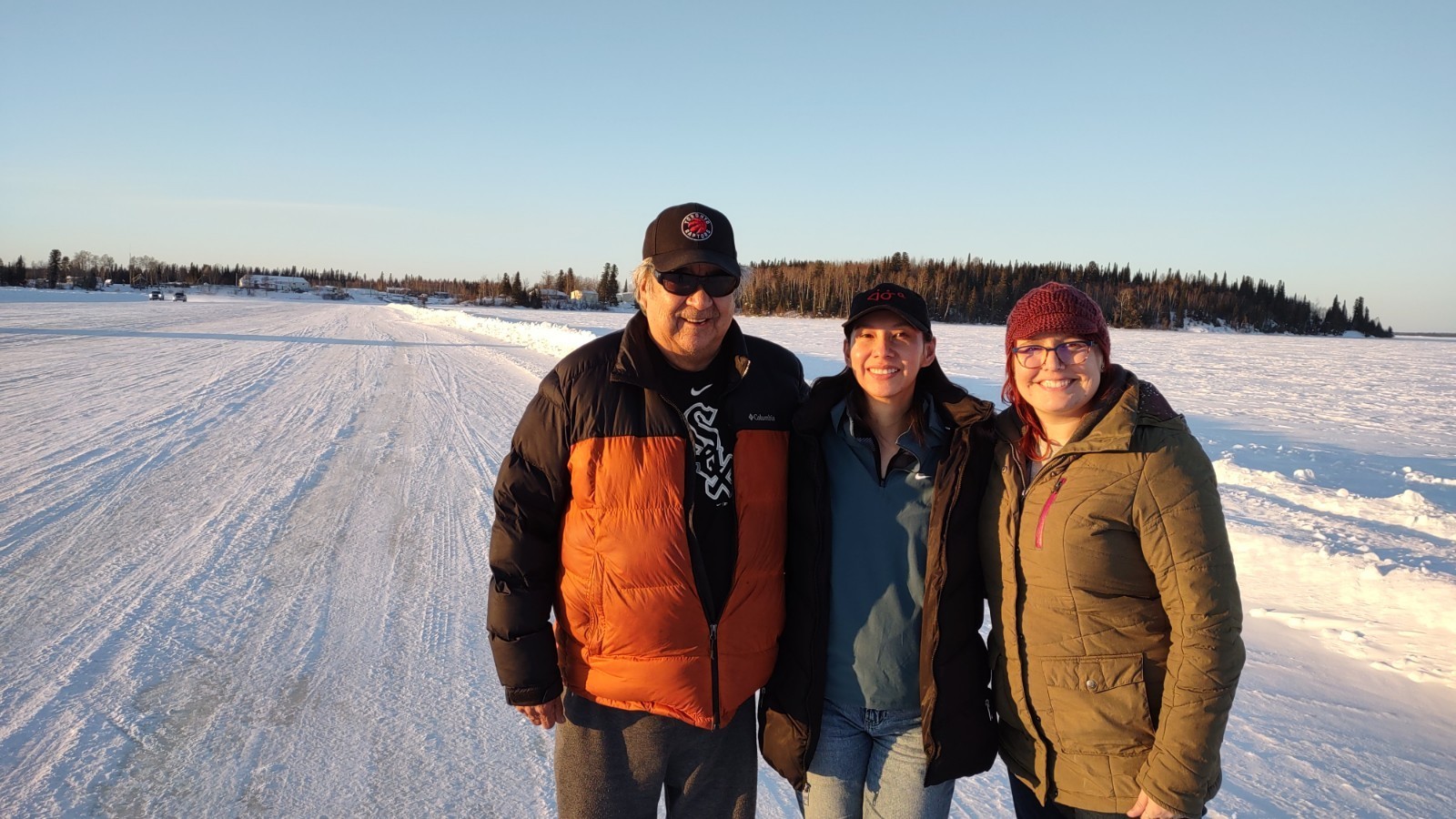
Ice Roads Risk Reduction Project Slides Toward Conclusion
March 17, 2023Not everyone has access to year-round roads in Canada. The Island Lake communities are a close-knit network of four communities whose residents rely on the ice roads that form during […]
more>
Gathering for Conservation and Endangered Species at the Calgary Zoo
March 17, 2023CIER’s Project Manager, Kat Hewitt, and Indigenous Knowledge and Engagement Coordinator, Eddie Guo, recently attended the 13th Prairie Conservation and Endangered Species Conference at the Calgary Zoo from February 21 […]
more>
What Makes Species At Risk So Important to Us?
March 17, 2023To gain a better understanding of the importance of species at risk, CIER has created an approachable, clever way to draw the general public’s interest through a social media campaign. […]
more>
Collaborative Community-Based App Moves Forward
March 17, 2023The next phase of CIER’s Community Based Monitoring (CBM) app has come to an end thanks to the generous support from the Donner Canadian Foundation, and Tech for Nature (RBC). […]
more>
CLOSED: Executive Assistant
January 23, 2023Are you the One? We need your skills! The Centre for Indigenous Environmental Resources (CIER) invites applicants for the position of Executive Assistant. The successful candidate is responsible for providing […]
more>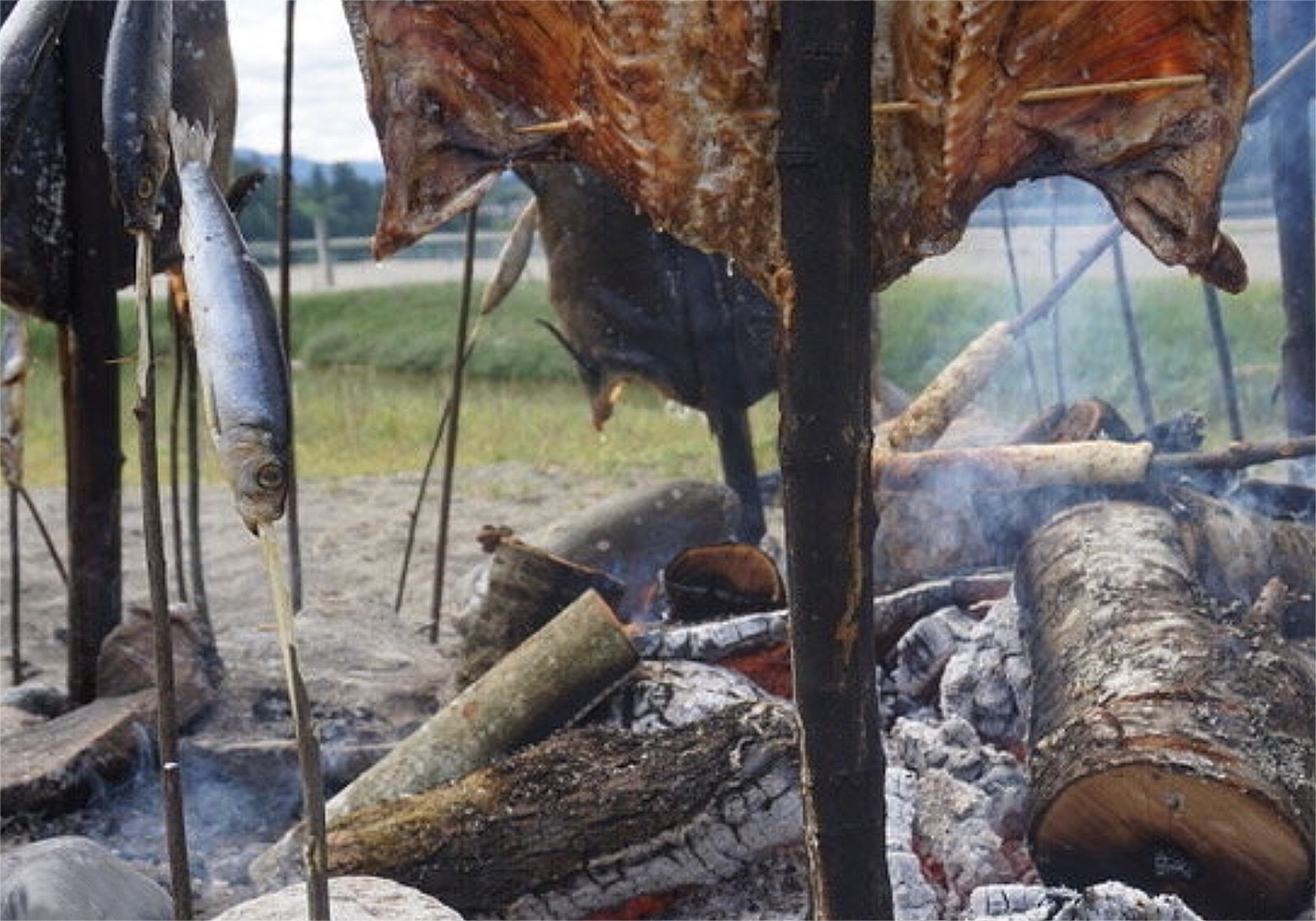
Gathering Knowledge for Indigenous Food Security and Food Sovereignty
December 14, 2022The Centre for Indigenous Environmental Resources (CIER) is working with partners to collect information related to food sovereignty and food security in Indigenous Nations and communities. We are currently contacting […]
more>
CIER Plants Seed of Pollination Knowledge in Students
December 6, 2022Pollination has become an increasingly important topic with movements such as “Save The Bees” spreading across the globe. But why is pollination essential? What role do Indigenous communities and their […]
more>
CIER Expands Learning Opportunities for Communities
December 6, 2022CIER is pleased to announce the creation of CIER Ecoversity, an online learning resource for Indigenous Communities across Canada. Over the past 25 years and in excess of 1000 projects, […]
more>
CIER Works Across Canada to Support Indigenous Peoples on Environmental Issues
December 6, 2022-Niki Wilson One of Shianne McKay’s most rewarding work moments came while sitting in a room, surrounded by Indigenous women and youth in the small community of Fort Simpson, Northwest […]
more>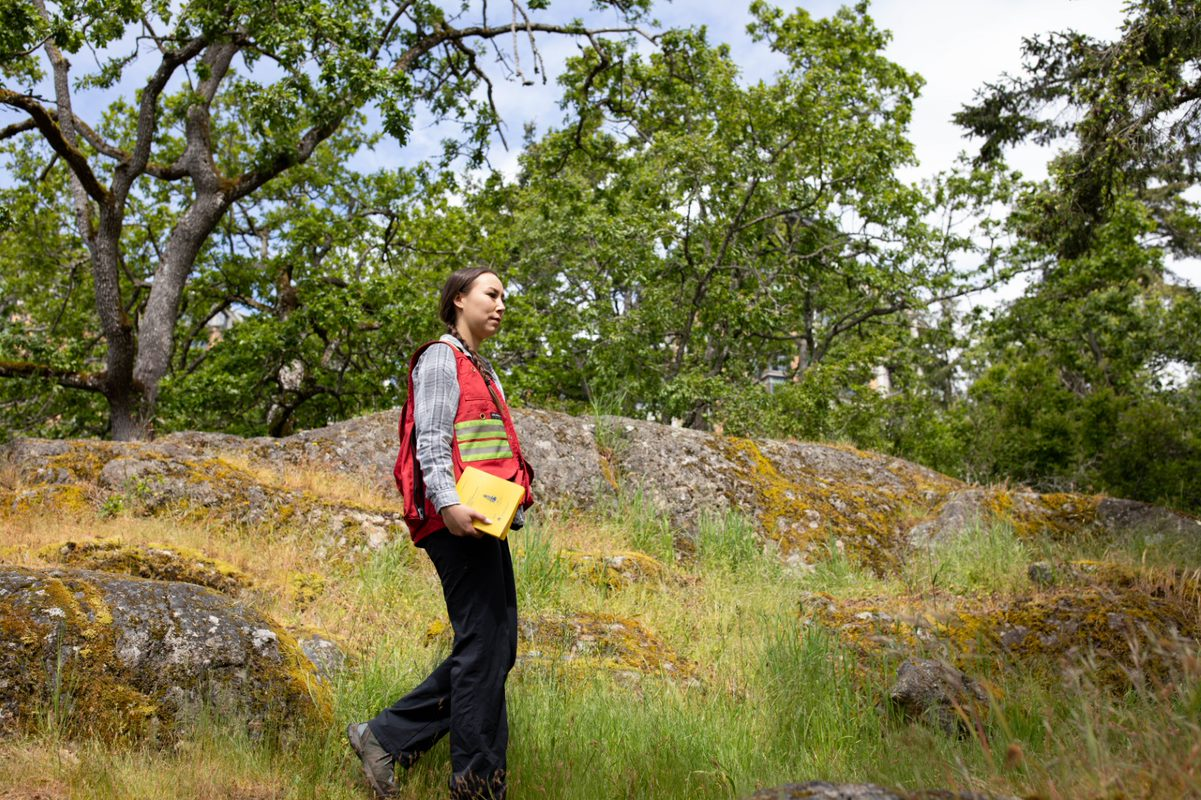
CIER Student’s Path Comes Full Circle
December 6, 2022Indigenous peoples have a special relationship with the earth and all living things. This leads to a path of profound spiritual connection that guides them to practice reverence, humility and […]
more>
CLOSED: Communications Associate
October 14, 2022If you are looking to use and further develop your communications and social media skills, the Centre for Indigenous Environmental Resources (CIER) has an opening for an energetic person with […]
more>
CLOSED – Water Governance Associate
October 6, 2022Are you the One? We need your skills! The Centre for Indigenous Environmental Resources (CIER) invites applicants for the position of Water Governance Associate. The successful candidate will be keen […]
more>
First Nations empowered to monitor birds and other species at risk
September 12, 2022It is important to protect all species at risk, and specifically in this focus– birds, as they also help with ecological balance by eating mosquitoes and pollinating plants. This helps to […]
more>
Putting Biodiversity on the Map
September 12, 2022CIER Proud to be Part of the Key Biodiversity Areas Project The term ‘biodiversity’ is increasingly in the news. But what does it mean, in a way that is meaningful […]
more>
Working together with nature improves water quality
August 2, 2022Water knows no boundaries. As it flows through communities and across borders, regional collaboration is the key to understanding and taking-action on shared water challenges. Since 2017, a project by […]
more>
NOW HIRING: Biodiversity Project Manager- Now Closed
July 19, 2022Engagement, planning, logistics, team motivator, strong communication and facilitation – we need your skills! The Centre for Indigenous Environmental Resources (CIER) invites applicants for the position of Biodiversity Project Manager to support […]
more>
Facebook Birthday Fundraisers: A Personal Way to Support CIER!
June 20, 2022Donations from people like you help us do the work we do. Two weeks before your birthday, you’ll receive a notification directly from Facebook inviting you to host a campaign […]
more>
5 Tips for an Eco-Friendly Beach Day!
June 20, 2022Use Environmentally-Friendly Sunscreen Although it’s important to protect your skin from the sun, the chemicals in many sunscreens can be detrimental to lakes, oceans, and the creatures that live in […]
more>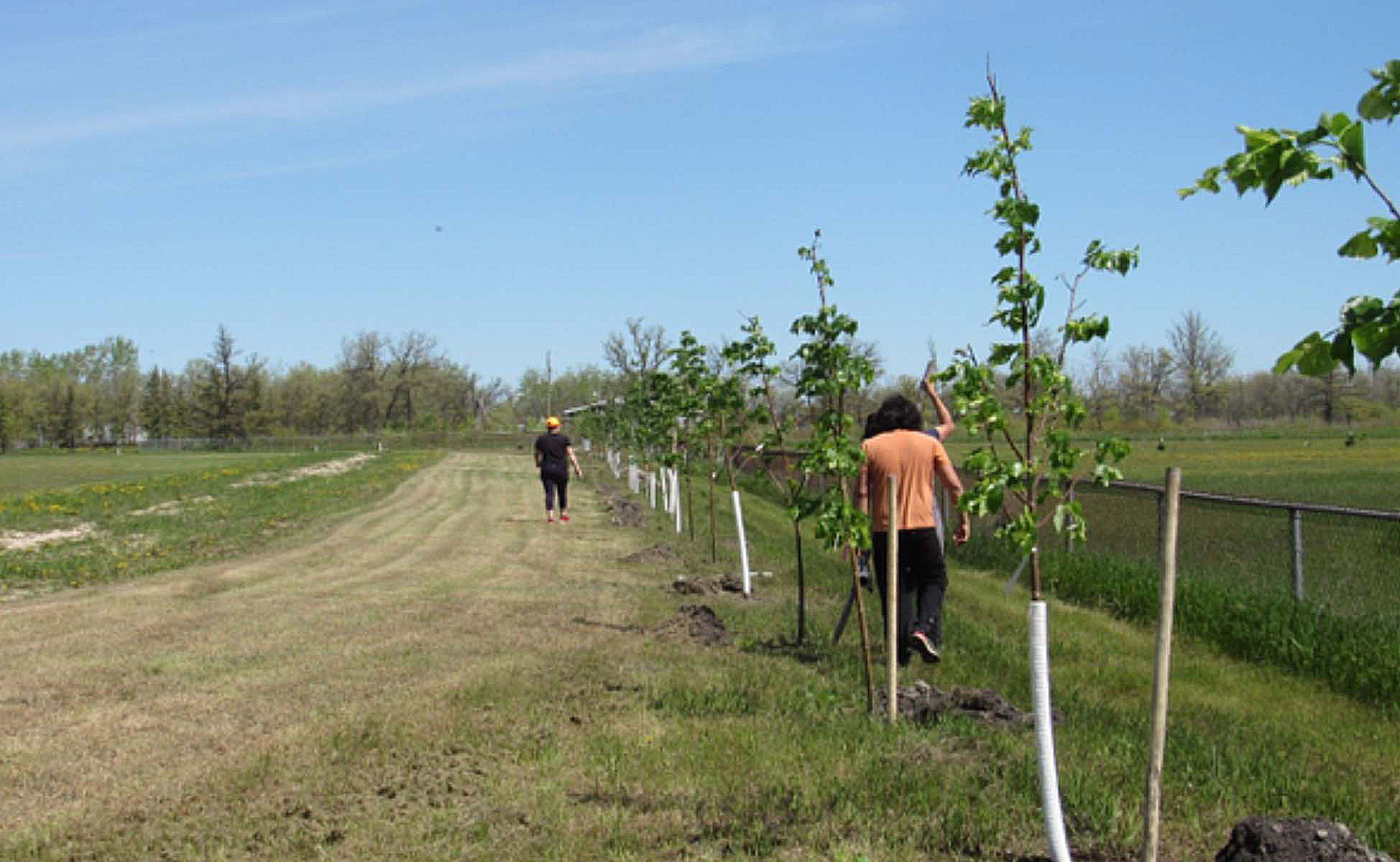
Trees Are an Important Part of Climate Change Adaption in Sandy Bay
June 20, 2022Earlier this month hundreds of trees were planted in Sandy Bay Ojibway First Nation. This year CIER has been working with Sandy Bay to create a climate change adaptation plan, […]
more>
CLOSED: Biodiversity Associate
May 11, 2022The Centre for Indigenous Environmental Resources (CIER) invites applicants for the position of Biodiversity Associate. The successful candidate will be keen to join our team to support project implementation in the […]
more>
CLOSED: Climate Change Associate
May 10, 2022The Centre for Indigenous Environmental Resources (CIER) invites applicants for the position of Climate Change Associate. The successful candidate will be keen to join our team to support project implementation in […]
more>
CLOSED: Indigenous Engagement Coordinator
April 26, 2022The Centre for Indigenous Environmental Resources (CIER) is seeking to hire an Indigenous Engagement and Conservation Coordinator for a contract position. Reporting to CIER and working closely with Environment and […]
more>
CIER is Learning and Listening at In-Person Workshops Again
March 21, 2022On March 7 and 8, CIER was able to host one of our first non-virtual community events since the onset of COVID-19! During the past few years, we’ve been focusing […]
more>
Donate to CIER using Sephora Beauty Insider Points in April!
March 21, 2022We’re proud to announce that starting April 1st, 2021, we are partnering with Sephora Canada. This partnership will allow you to use your Sephora Beauty Insider points for good. On […]
more>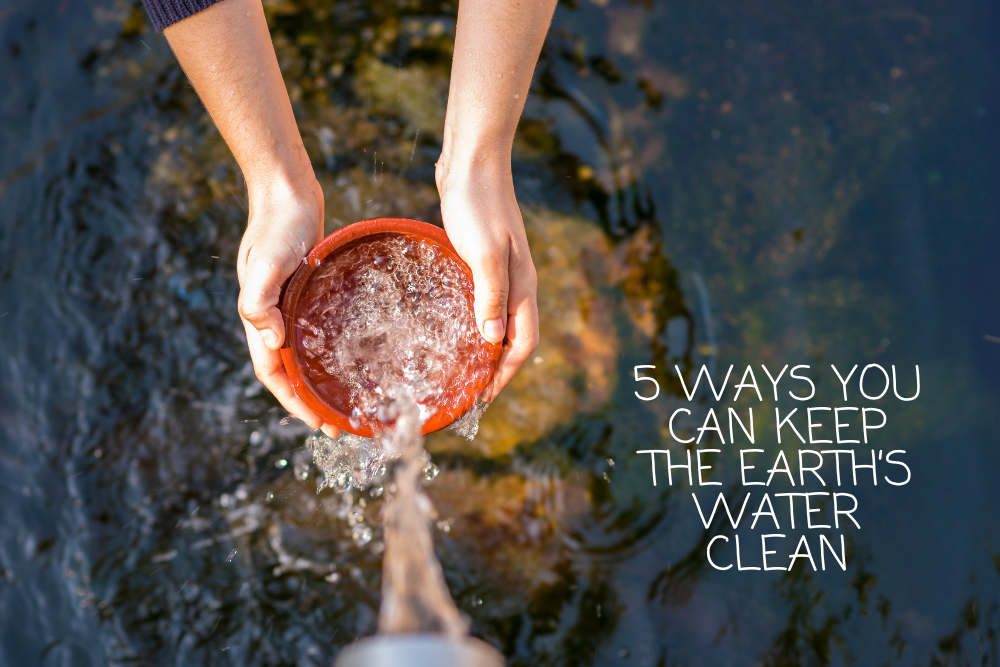
5 Ways You Can Keep the Earth’s Water Clean
March 21, 2022Every living thing on Earth needs water to live. When we misuse and abuse this precious resource, we’re reducing the Earth’s ability to provide for all living things. Water is […]
more>
Kids Can Change the World
December 21, 2021CIER is proud to be partnering with Earth Rangers on Project 2050: Climate-friendly habits to change the world. This national movement is about empowering children with the knowledge and skills needed to tackle climate change. […]
more>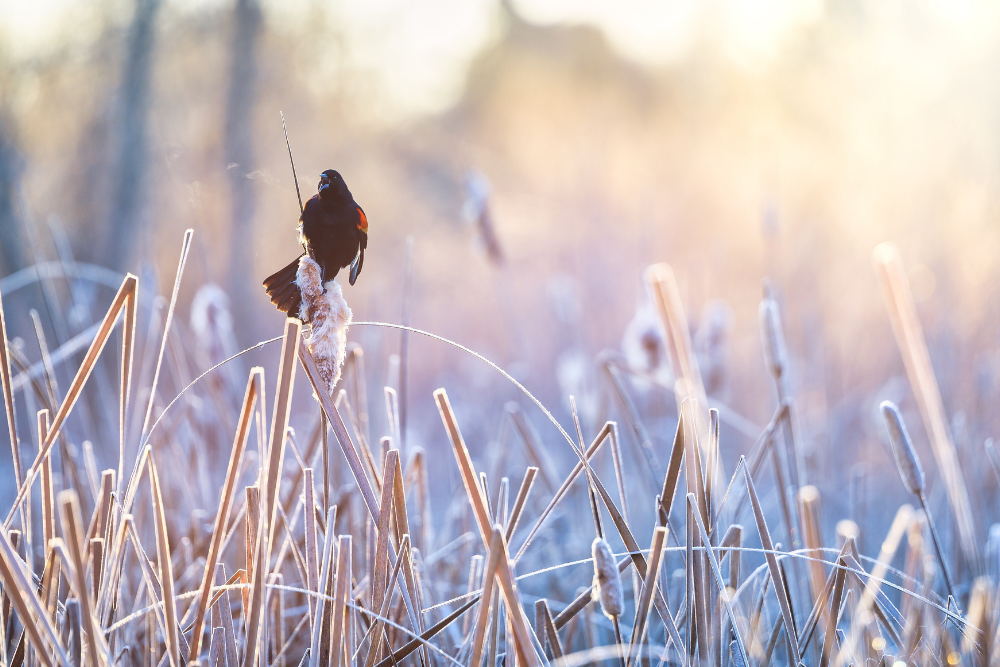
Collaboration is Helping to Heal Lake Winnipeg
December 21, 2021There are too many nutrients, like phosphorous, flowing into Lake Winnipeg. The size of Lake Winnipeg means that this is an issue that affects many municipalities and First Nations across Manitoba. Cleaner water is better for all […]
more>
We’re Celebrating 2021
December 21, 2021With your help, CIER can keep tackling complicated problems. Join us in changing the world. This year… We Celebrated 25 Years of Accomplishments For our 25th Anniversary Celebration, we’ve published […]
more>
CLOSED – Indigenous Knowledge & Engagement Coordinator
December 17, 2021The Centre for Indigenous Environmental Resources (CIER) is seeking to hire an Indigenous Knowledge & Engagement Coordinator for a contract position. Reporting to CIER and partnering with Environment and Climate […]
more>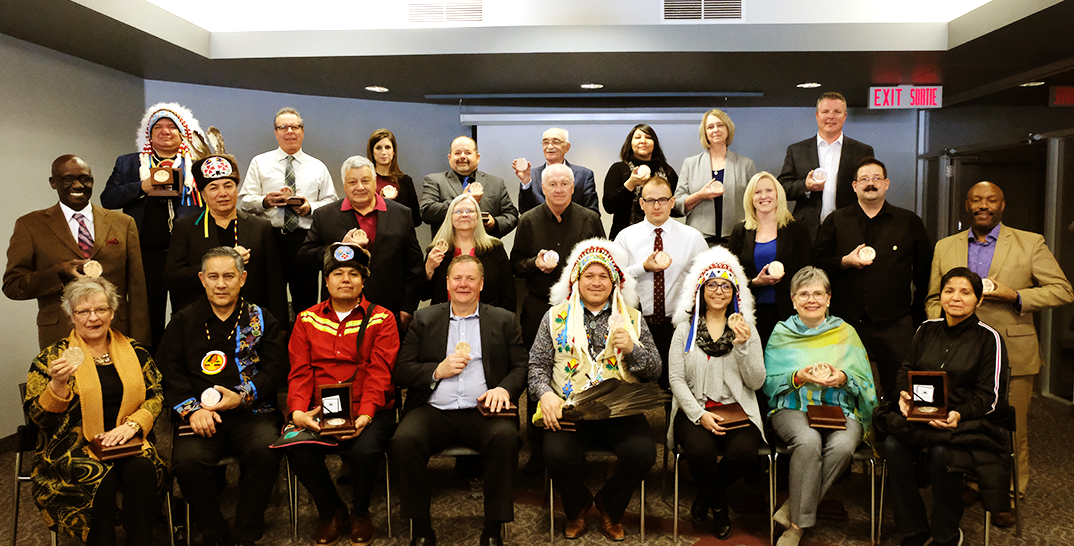
A better way to work together: A strategic and collaborative approach to sustainable communities
October 15, 2021Elected leaders in Southern Chiefs’ Organization (SCO) and Winnipeg Metropolitan Region (WMR) have acknowledged there needs to be a better way to work together. The Collaborative Leadership Initiative (CLI) is a process, facilitated by the Centre for Indigenous Environmental […]
more>
Youth Add Their Voices to the Conversation About a Sustainable Future
September 20, 2021Youth adding their voices to the conversation about reconciliation and our environment can be very powerful and that’s exactly what youth who attended our Podcasting 101 workshop did. We’re excited […]
more>
How CIER is Helping Communities Save Ecosystems
September 20, 2021Before you can save an ecosystem, you need to know what’s happening to it. If you want to know what’s happening to it, you need to monitor the land, water, plants, […]
more>
Fundraising Efforts Support Planting of Hundreds of Trees
September 20, 2021Thanks in part to amazing fundraising efforts by sustainable swimwear brand Londre, CIER is gearing up to plant hundreds of native trees on the banks of the Winnipeg River in Sagkeeng […]
more>
CONTEST: Telling Your Story Through Podcasting
August 28, 2021Podcasting is an amazing platform that gives people the opportunity to connect, present their ideas and share their stories. This 2-hour beginner workshop will be facilitated by Dan Vadeboncoeur and […]
more>
CLOSED – Three Opportunities
July 29, 2021The Centre for Indigenous Environmental Resources has three job opportunities for qualified professionals interested in protecting species at risk.INDIGENOUS KNOWLEDGE & ENGAGEMENT COORDINATORSThe Centre for Indigenous Environmental Resources (CIER) is […]
more>
Are You The One – Project Manager
June 28, 2021Are you the One? We need your skills! The Centre for Indigenous Environmental Resources (CIER) invites applicants for the position of Project Manager. The successful candidate will be keen to join our team to plan […]
more>
How CIER is Tackling Food Sovereignty
June 17, 2021What is Food Sovereignty?Food sovereignty can be defined as: “Food sovereignty is a food system in which the people who produce, distribute, and consume food also control the mechanisms and […]
more>
A Call To Action
June 17, 2021This article discusses topics that may be upsetting and triggering to residential school survivors and their families. If you or someone you know needs support, please call the 24/7 Residential […]
more>
5 Tips for Staying Cool AND Saving Energy
June 15, 2021These ‘cool’ Summer tips will help you cut down on your need for air-conditioning this summer, which reduces your carbon footprint significantly1. Keep Blinds/Curtains ClosedIt can be tempting to let the […]
more>
Are You the One? – Research Associate Position
March 31, 2021Are you the One? We need your skills! The Centre for Indigenous Environmental Resources (CIER) invites applicants for the position of Research Associate.The successful candidate will be keen to join our […]
more>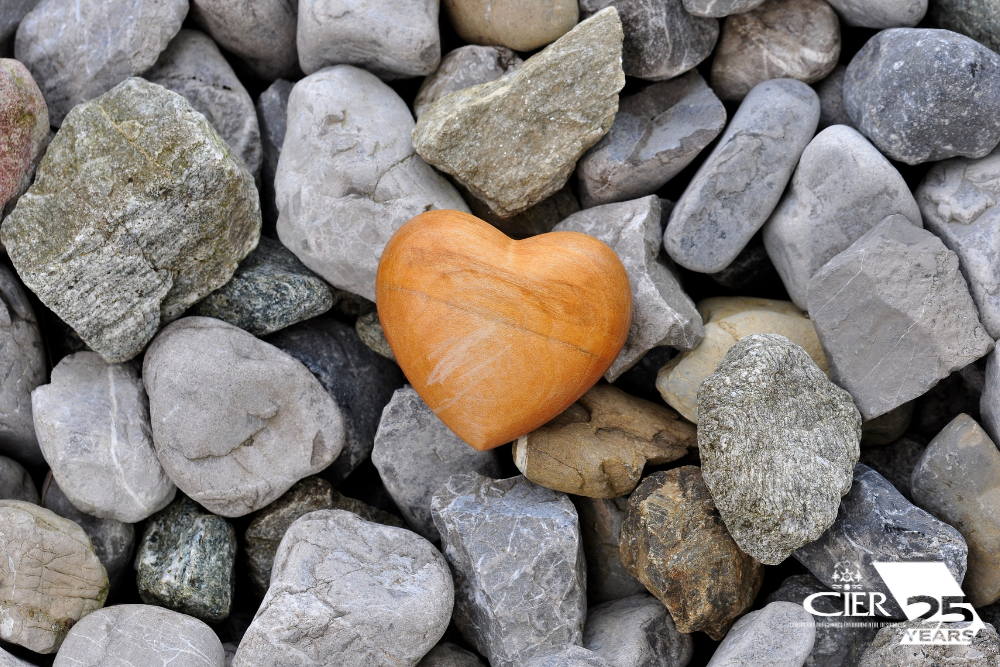
CIER Staff Self-Care Tips
March 17, 2021Taking time to care for yourself is always important, but COVID restrictions has really underlined the importance of paying attention to and caring for our bodies, minds, and spirits.At our […]
more>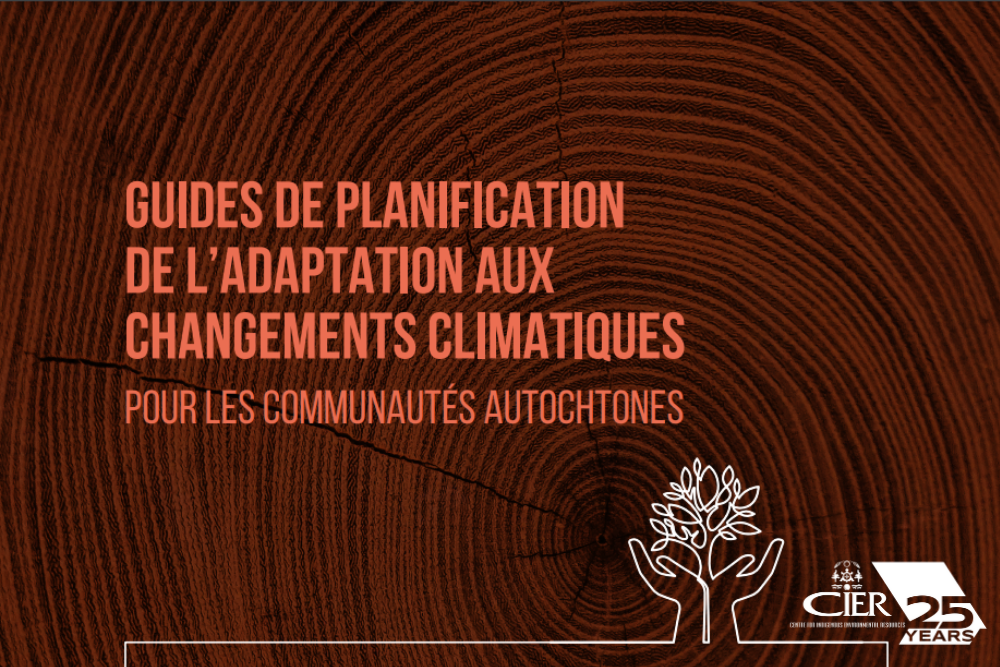
Version française disponible
March 17, 2021Nous sommes ravis d’annoncer que les versions françaises de ces ressources sont maintenant disponibles: Lisez ici We are excited to announce that the French versions of the ICCAP resources are now […]
more>
Workshops Spark a Brighter Future for Species at Risk
March 17, 2021There are currently over 800 Species at Risk in Canada, according to the Committee on the Status of Endangered Wildlife in Canada. We need to work together to help these […]
more>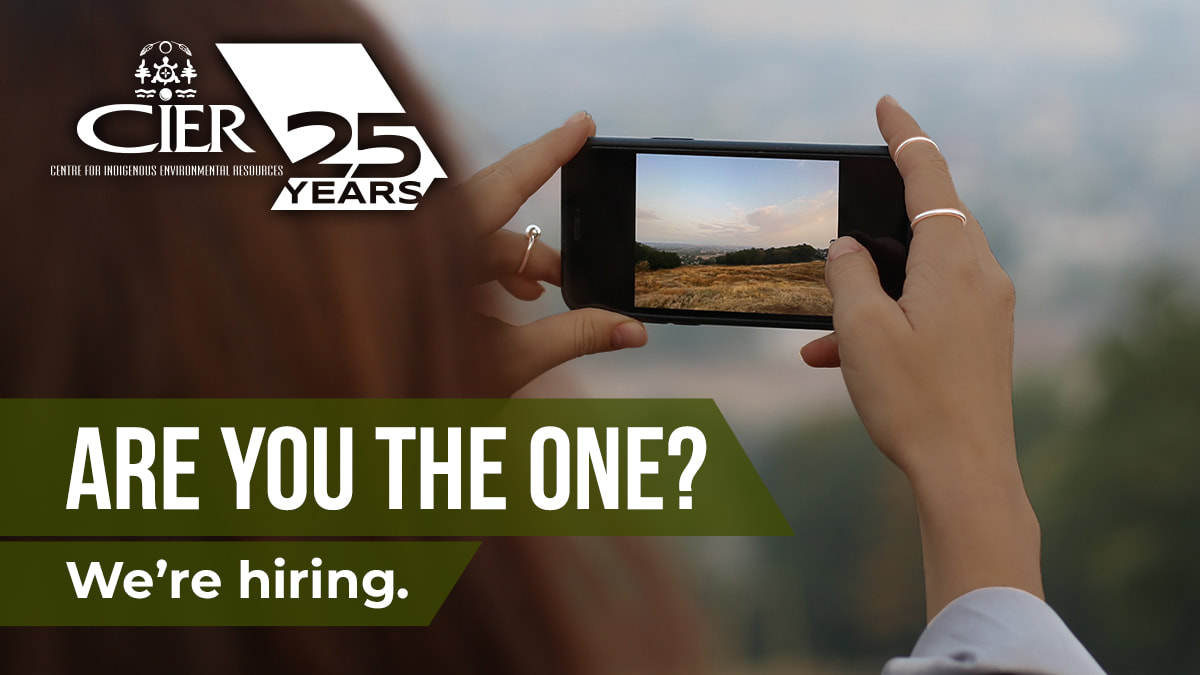
We’re Hiring – Social Media Coordinator
March 9, 2021Social Media Coordinator PositionDo you enjoy social media engagement? Are you looking for a way to foster your creativity to support an organization’s voice?If yes, then this is the opportunity […]
more>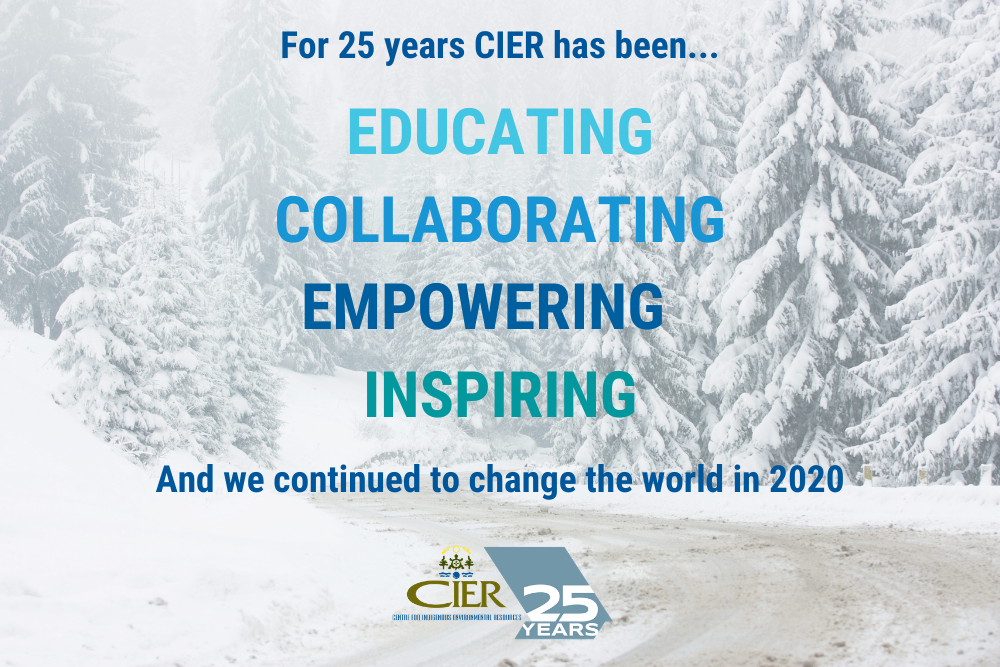
Celebrate 2020 With Us
December 15, 2020With your help, CIER can keep tackling complicated problems. Join us in changing the world.This year… We’ve Educated Shining Lights: Energy Literacy and Language in the Northwest TerritoriesIn the Northwest Territories, […]
more>
Indigenous Climate Change Adaption Planning Toolkit Launch
December 11, 2020We’re excited to announce the launch of the Indigenous Climate Change Adaption Planning Toolkit, created with First Nations Adapt. This toolkit will support Indigenous communities as they plan for climate risks […]
more>
Five Small Steps That Can Help Save the Planet
November 3, 2020In recent months we’ve all been at home more often. Whether you’re working from home or just spending more evening and weekends in, here are 5 simple steps you can […]
more>
How We’re Still Making History in a Digital World
November 3, 2020The elected leaders of the Collaborative Leadership Initiative (CLI) made history in March 2019 by coming together to sign a history memorandum of understanding. On that day these chiefs, mayors, and reeves […]
more>
Resetting the National Sail: A Considerations Paper on Indigenous Governance and The Canada Water Agency
September 28, 2020Water is critical to life, yet our water resources are at great risk due to climate change, pollution, overuse and other management challenges. On December 19, 2019, Prime Minister Justin […]
more>
CIER Nurtures the Newest Generation of Waste Warriors – Watch the Documentary
July 28, 2020This story was part of the CIER Summer 2020 Newsletter. Sign-up here for more stories like this.Martin McLean from Lake Manitoba First Nation’s eventual goal is to encourage his community to start […]
more>
Innovative Energy Posters Translated into Indigenous Languages
July 22, 2020This story was part of the CIER Summer 2020 Newsletter. Sign-up here for more stories like this.CIER’s Shining Lights program recently got Ria Letcher and other Northerners thinking about the role energy […]
more>
READ NOW: Dakota Field Guide and & Storybook – Learn to Identify Over 80 Grassland Birds
July 21, 2020This story was part of the CIER Summer 2020 Newsletter. Sign-up here for more stories like this. We need to re-learn how to listen to birds, they have so many things to […]
more>
The Hydro-Climatic Monitoring Roadmap: A guide to enabling hydro climatic monitoring in Indigenous communities
May 5, 2020Environment and Climate Change Canada’s (ECCC) Network of Networks (NoN) will support Canadian communities in establishing hydro-climactic monitoring programs to strengthen local stewardship over environmental resources and capacity building in communities through funding […]
more>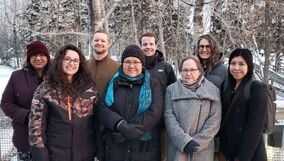
Continuing to Provide Support: CIER and COVID-19
April 8, 2020Like other organizations in these uncertain time, CIER is adapting. We sat down with CIER Executive Director Merrell-Ann Phare to learn how CIER is rising to the challenges brought by […]
more>
Inspiring a Generation of Bird Protectors
April 8, 2020In the Great Plains alone, 97% of tallgrass prairie, 71% of mixed grass prairie, and 48% of shortgrass prairie had been lost by 2003. There are 42 species of North […]
more>
Finding Comfort in Traditional Knowledge
April 8, 2020School for Manitoban children has been cancelled until September, but that doesn’t mean that learning has stopped. Shianne McKay, a Senior Project Manager with CIER, is taking homeschooling in stride. […]
more>
Shining Lights Energy Literacy and Language in the NWT
April 8, 2020Did you know that by making changes in small, everyday decisions you can save money, conserve heat and energy, and preserve the environment by reducing your diesel footprint? Simple actions like turning off […]
more>